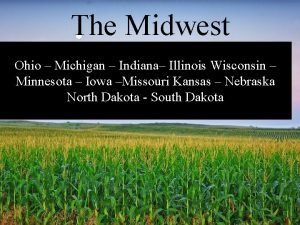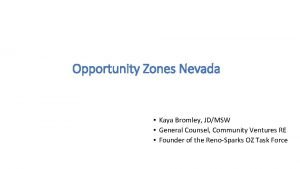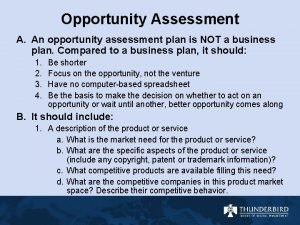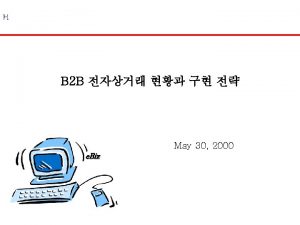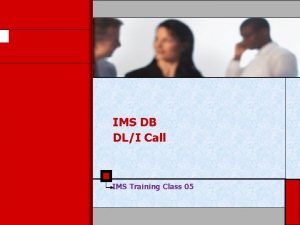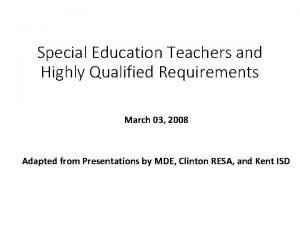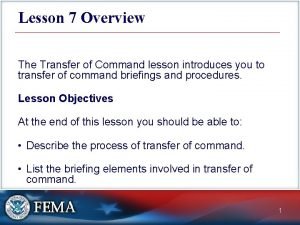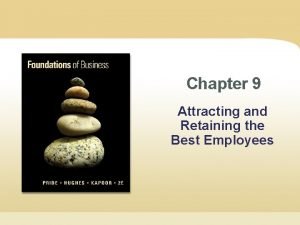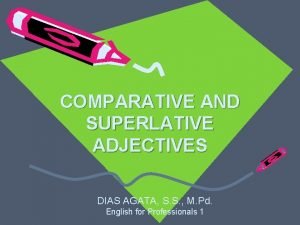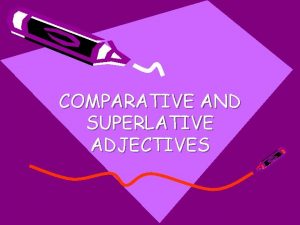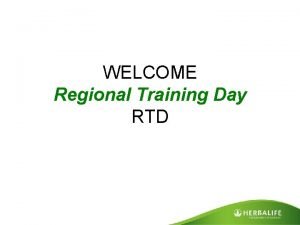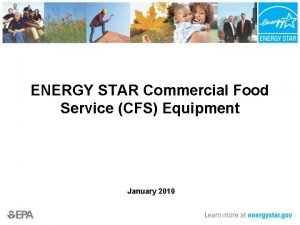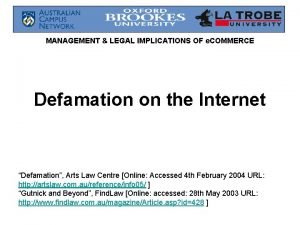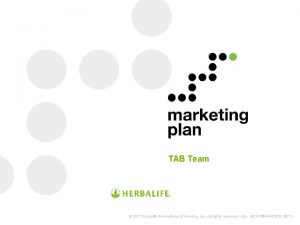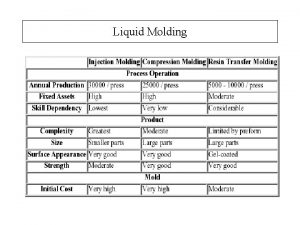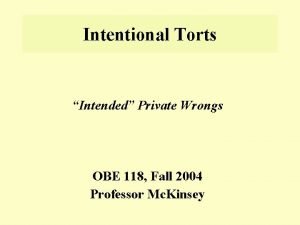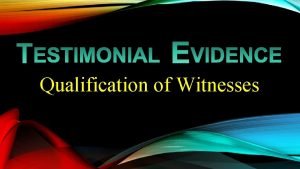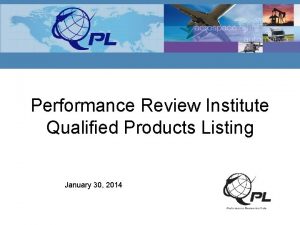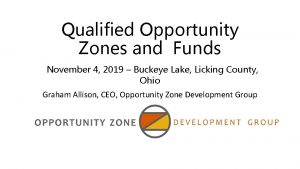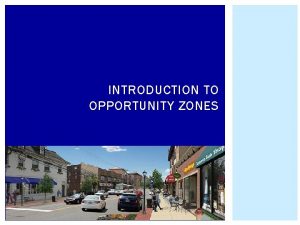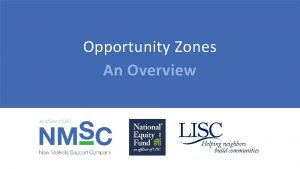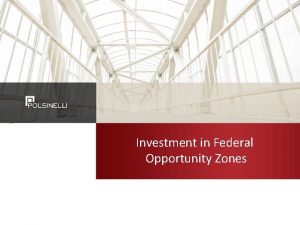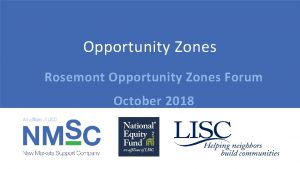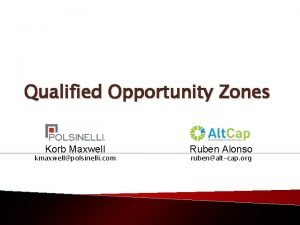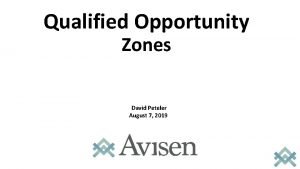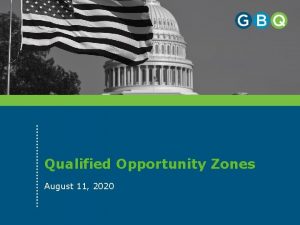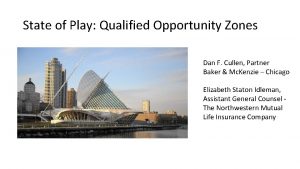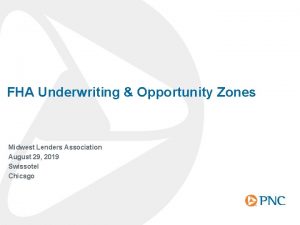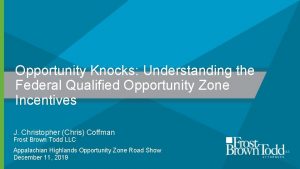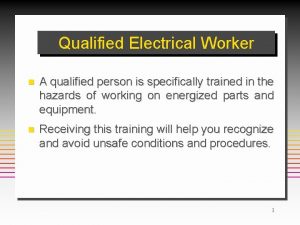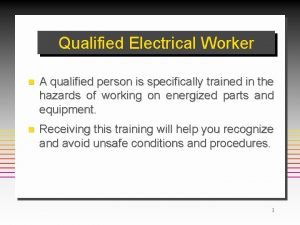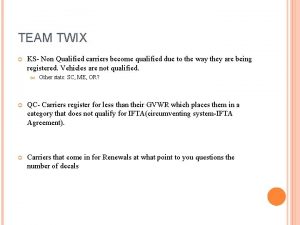Opportunity Zones Qualified Opportunity Funds General Overview Midwest















![Comparison to Previous Programs Final Thought: “They’re [OZ program] more or less what would Comparison to Previous Programs Final Thought: “They’re [OZ program] more or less what would](https://slidetodoc.com/presentation_image_h2/e35af0618679d1e7c95a5ad587f22e95/image-16.jpg)











![Challenges & Concerns Final Thought: ‘A lot of [Low-Income Housing Tax Credit] deals, say, Challenges & Concerns Final Thought: ‘A lot of [Low-Income Housing Tax Credit] deals, say,](https://slidetodoc.com/presentation_image_h2/e35af0618679d1e7c95a5ad587f22e95/image-28.jpg)



- Slides: 31

Opportunity Zones & Qualified Opportunity Funds – General Overview Midwest Lenders Association August 29, 2019 Swissotel Chicago

Topics to be Covered I. Opportunity Zone Incentives Basics II. Characteristics of Opportunity Zones III. Comparison to Previous “Zone” & Other Programs IV. Qualified Opportunity Funds Characteristics V. Related State & Local Initiatives VI. Challenges & Concerns about OZs VII. List of Resources & Articles 2

I. Opportunity Zone Incentives Basics

Opportunity Zone Incentives Basics § New sections 1400 Z-1 and 1400 Z-2 of the Internal Revenue Code § Executive Order 13853 established White House Opportunity and Revitalization Council on December 12, 2018, to coordinate federal agency efforts; Secretary Carson chairs the Council § Opportunity Zones provide capital gains relief to investors who invest an amount equal to all or part of capital gains they recognized into a Qualified Opportunity Fund (QOF), which uses the invested amount to invest in Qualified Opportunity Zone Business Property (QOZBP) and/or stock or partnership interests in a Qualified Opportunity Zone Business (QOZB) in any of approximately 8, 700 Qualified Opportunity Zones (QOZs) in the 50 states, District of Columbia, and 5 possessions 4

Opportunity Zone Incentives Basics § Two tax benefits – deferral and gain elimination § Deferral of roll-over gain until the earlier of December 31, 2026, or an Inclusion Event (reduce or terminate investment) § Gain Elimination – - 10% of deferred gain if QOF interest is held for at least 5 years on or before December 31, 2026 - 15% of deferred gain if QOF interest is held for at least 7 years on or before December 31, 2026 - All gain on appreciation in QOF interest if the QOF interest is held for at least 10 years and there is a taxable disposition on or before December 31, 2047 5

Opportunity Zone Incentives Basics § Eligibility – - Taxpayer recognizes capital gain from a sale to an unrelated person - Within 180 days Acquires a qualifying interest in a QOF from the QOF or the owner of an interest in a QOF § Investment must be equity, not debt § Property must be purchased after 12/31/2017 from unrelated party (no more than 20% common ownership. ) § Property must be substantially improved within any 30 -month period after the QOF acquires the property, the QOF makes capital improvements in an amount that is more than the QOF’s tax basis (purchase price) for the property at the beginning of the 30 -month period 6

II. Characteristics of Opportunity Zones

Characteristics of Opportunity Zones § There are over 8, 700 zones in all 50 states, Washington, DC, and US Territories. § Each OZ determined by governors. § 42% are located in rural census tracts, 35% in urban tracts, and 23% in suburban tracts. § Key characteristics: o Have at least twice the national average of poverty and unemployment rates. o Are home to over 30 million Americans, 56 percent of which are demographic minorities. o Account for nearly 12% of America’s land mass o Have a 30% poverty rate and house residents earning, on average, 59% of AMI. 8

Characteristics of Opportunity Zones Source: Novogradac 9

Characteristics of Opportunity Zones § Not all Opportunity Zones are created equally for new business or real estate investments. § Communities of color and low-income neighborhoods in Opportunity Zones want greater investment that not only brings economic revitalization, but also preserves and strengthens current residents, business and cultures, instilling value in people rather than displacing them. § Could be described as low density, drivable suburban areas with significantly higher housing and transportation costs, higher greenhouse emissions, and lower quality of life. Source: https: //smartgrowthamerica. org/app/uploads/2018/12/LOCUS_opportunity-zones-FINAL. pdf § 63% of RAD deals are in an OZ. 10

Characteristics of Opportunity Zones However: “Despite this current reality, residents and businesses prefer to live or operate in thriving, walkable communities. These desired places, whether in urban, suburban or rural communities, share common characteristics including a mix of building types and uses, diverse housing and transportation options, and social inclusiveness. According to the 2016 Foot Traffic. Ahead report, these walkable urban places (Walk. UPs) command a 74 percent price premium over their drivable sub-urban counterparts and perform higher on social equity, health and climate resilience. ” Source: ibid 11

III. Comparison to Previous “Zone” & Other Programs

Comparison to Previous Programs § “The US Treasury estimates that at least $1 trillion will be invested in Opportunity Zones over the next 10 years. If true, Opportunity Zones will be the single largest US community development initiative undertaken in the last thirty years. ” (www. smartgrowthamerica. org) § Purpose of OZ program: Stimulate economic opportunity, encourage entrepreneurship, expand educational opportunities, develop and rehabilitate quality housing stock, promote workforce development, and promote safety and prevent crime in economically distressed communities. § “Sin businesses” not eligible - golf courses, country clubs, massage parlors, hot tub facilities, suntan facilities, racetracks or other facility used for gambling, or liquor stores. No marijuana either, says Mnuchin. 13

Comparison to Previous Program Period Govt. Level Purpose Activity/Investment/ Property Type Enterprise Zones (state), Empowerment Zones, Enterprise Communities, and Renewal Communities (federal) 1980 s – 1990 s Local, state, and federal Encourage businesses to locate in low-income areas of a city or county Business development, capital investment LIHTC 1993 – Present Federal, admin. at state level Construction and rehabilitation of affordable housing Multifamily Urban Empowerment Zone Promise Zone Opportunity Zone Incentives Tax abatements or exemptions (property, inventory, sales, franchise), tax credits (investment, job creation, LITHC), low interest loans, bond financing, training grants Federal and state tax credits Business development Provide incentives to business through the tax code (wage credits, rapid depreciation, provide bonding authority for infrastructure development, and offered distressed communities an attractive grant program 2013 (10 years) Federally designated, local communities apply Increase economic activity, improve educational opportunities, leverage private investment, reduce violent crime, enhance public health and address other priorities identified by the community Various Use of five Ameri. Corps VISTA members in the zone's work, a federal liaison assigned to help designees navigate federal programs, preferences for certain competitive federal grant programs and technical assistance from participating federal agencies, potential tax incentives 2018 - ? Federal See previous slide Business, multiple property type 1993 – 2013 Create jobs in the most Federally economically distressed designated, local areas of urban and rural communities areas through tax apply incentives and grants. Deferral and reduction of tax on capital gains 14

Comparison to Previous Programs § Most economic development programs follow a similar pattern: governments offer a mix of tax breaks, exclusions, and fewer regulations to entice new investments in economically distressed communities. (Mc. Kinsey) § Compared to other “Zone” programs, OZ’s benefits are more easily quantifiable and monetized. § The OZ program is simpler and more akin to LIHTC but without income restrictions and broader in scope. § No caps on OZ investments, not competitive as with LIHTC & NMTC. § Unlike a 1031 exchange, gains do not need to be of “like kind”; capital gains from stocks, bonds, real estate, sale of a company or other assets can be invested into QOFs. 15
![Comparison to Previous Programs Final Thought Theyre OZ program more or less what would Comparison to Previous Programs Final Thought: “They’re [OZ program] more or less what would](https://slidetodoc.com/presentation_image_h2/e35af0618679d1e7c95a5ad587f22e95/image-16.jpg)
Comparison to Previous Programs Final Thought: “They’re [OZ program] more or less what would happen if the Low-Income Housing Tax Credit (LIHTC) and Community Development Block Grant (CDBG) produced offspring: opportunity zones both aim at generating economic development in declining areas (similar to CDBG) and use the tax code to incentivize public private partnerships (like LIHTC). ” – “Opportunity Zones … For Whom? ”, Cato Institute Op-Ed. 16

IV. Qualified Opportunity Funds Characteristics

Qualified Opportunity Funds Characteristics § QOFs must be certified by U. S. Department of the Treasury. § Required to hold at least 90% of their assets in qualified opportunity zone businesses and/or business property. § As of January 2019, 78 QOFs listed. As of May 29, 160 are listed. Mc. Kinsey noted 230. § QOFs two main types: (1) sponsored by private equity firms that already have a focus on similar investments; (2) developer-sponsored, comprised of “friends and family” type investors. § Other QOF sponsors: direct bank investments(CRA credit), LIHTC syndicators; CDFIs; REIT; crowdsourcing investors; developers. 18

Qualified Opportunity Funds Characteristics § Fund size range: $750, 000 to $5 billion. § Economic investors but some will be mission-driven investors as well. § Focus of QOFs can be on certain property type; typical Investment Focus, per QOF directory: “Commercial real estate, community revitalization, economic development, hospitality development, mixed-use development, multifamily residential, single-family residential, student housing, workforce housing” § Focus can be by location – city, state, region, or nationwide. § Combination: Multi-family and mixed-use projects on or near the campuses of Historically Black Colleges and Universities 19

Qualified Opportunity Funds Characteristics § QOFs can be for a large, multi-property development or a single asset. § Not just investment real estate – e. g. , (1) build and operate a 20 -acre state-of-the-art greenhouse integrated with Combined Heat and Power (“CHP”) to grow fresh, healthy, and highquality vegetables in the Berlin, NH, Opportunity Zone; (2) renewable energy production; (3) high-potential, early-stage startups; (4) charter schools; and (5) professional sports. § Requirements for investing in QOF: must have capital gain within last 180 days, must be an “accredited investor, ” investment minimums, long term hold. § Developer could invest own money that would have been invested anyway via a QOF. 20

Qualified Opportunity Funds Characteristics § From May 2019 survey by Novogradac of 136 QOFs: o Total stated targeted capital raise in excess of $29 billion. o 40+ respondents report raising $790 million in total as of late May. o More than 50% or respondents plan to use other tax incentives in conjunction with OZ benefits. o Targeted investments of respondents: Housing Only Housing & Other Real Estate & Operating Business Only 23% 39% 38% 1% o Of the 17 responding funds that plan to invest in affordable housing, nine say they plan to use low-income housing tax credits. Source: https: //www. novoco. com/notes-from-novogradac/how-much-capital-have-opportunity-fundmanagers-raised 21

V. Related State & Local Initiatives

Related State & Local Initiatives Samples; new state initiatives announced weekly. § California Opportunity Zone Partnership organized by the national nonprofit organization Accelerator for America and the State of California, the Energy Foundation, and the Cities of Oakland, San Francisco, San Jose, and Los Angeles; support government officials of small to medium sized California cities in taking advantage of their OZs benefit their communities. § CA: Governor's budget includes a provision to partially conform state tax laws to the federal tax code for the opportunity zones (OZ) incentive; would make OZ investments in green technology and affordable housing match federal benefits for capital gains reduction and deferral. 23

Related State & Local Initiatives § MD: Gov. Larry Hogan signed legislation Tuesday to expand state tax incentives to OZs and extend the state Historic Tax Credit program through 2024. S. B. 581 makes qualifying businesses and property in OZs eligible for the More Jobs for Marylanders program and certain tax credits. § NE: Governor signed legislation giving priority to OZs in receiving funds from the state Affordable Housing Trust Fund (HTF) and other programs. § WA: H. B. 1324 would create a tax credit against business tax or insurance premium tax equal to the amount of the contribution to a rural development and opportunity zone account. 24

VI. Challenges & Concerns

Challenges & Concerns § “The Opportunity Zone credit is not going to make a bad deal any better. Deals still have to have the fundamentals to economic sense. There a lot of deals we see that have great social value that just aren’t ready. ” -- Cathy Niederberger, Managing Director of Community Development Banking, PNC § “Successfully investing in the Zones will require careful attention to existing community assets, needs and priorities. ” – USIIA/Beeck Center for Social Impact and Innovation. § “[C]hallenges may be helping investors and other stakeholders understand navigate the program, and ensuring that the benefits transform communities and help local residents. ” – Mc. Kinsey 26

Challenges & Concerns § Will there be an adequate reporting framework? Senate bill introduced on May 8 th to require collection of information on investments in OZs. § Measuring success against specific impact objectives beyond investment returns - job creation, MBWBE participation, education, green/environmentally sound development, community engagement § Gentrification and displacement of current residents § Lender/investor concern - “First one in” risk § Responsible exits that maintain durable community benefits § “Should be” compatible with LIHTC, and NMTC. 27
![Challenges Concerns Final Thought A lot of LowIncome Housing Tax Credit deals say Challenges & Concerns Final Thought: ‘A lot of [Low-Income Housing Tax Credit] deals, say,](https://slidetodoc.com/presentation_image_h2/e35af0618679d1e7c95a5ad587f22e95/image-28.jpg)
Challenges & Concerns Final Thought: ‘A lot of [Low-Income Housing Tax Credit] deals, say, would never get done without LIHTC, and with opportunity zones we’re seeing that for the most part, the deal works anyway, and OZs are an added benefit, ’ Zegen said. ” – “Lenders Don't Care If Your Project Is In An Opportunity Zone, ” biznow. com article. 28

Vl. I. Resources

List of Resources § IRS FAQ: https: //www. irs. gov/newsroom/opportunity-zones-frequentlyasked-questions § OZ Mapping: Zoom in to view OZs https: //www. cims. cdfifund. gov/preparation/? config=config_nmtc. xml § List of Articles: https: //www. ncsha. org/resource/opportunity-zonesarticles-and-background-materials/ § QOF Directory: Downloadable PDF https: //www. ncsha. org/resource-center/opportunity-zones/ § Novogradac Resource Center: https: //www. novoco. com/resource-centers/opportunity-zones-resourcecenter 30

List of Resources § OZ Ranking Report: https: //smartgrowthamerica. org/app/uploads/2018/12/LOCUS_opportunityzones-FINAL. pdf § Mc. Kinsey Article: “Making the most of US opportunity zones” https: //www. mckinsey. com/industries/public-sector/our-insights/making-themost-of-us-opportunity-zones § OZ Framework: https: //ozframework. org/ 31
 Midwest region
Midwest region Zonas templadas
Zonas templadas How do littoral zones differ from riparian zones?
How do littoral zones differ from riparian zones? Asheville opportunity zones
Asheville opportunity zones Nevada opportunity zones
Nevada opportunity zones Opportunity recognition and opportunity assessment plan
Opportunity recognition and opportunity assessment plan General overview
General overview Qualified ssa in ims
Qualified ssa in ims Highly qualified special education teacher
Highly qualified special education teacher When command is transferred the process should include a
When command is transferred the process should include a Attracting and retaining the best employees
Attracting and retaining the best employees Ppv herbalife
Ppv herbalife 7 steps to becoming a qualified artisan
7 steps to becoming a qualified artisan Boring comparative and superlative
Boring comparative and superlative Sweet comparative superlative
Sweet comparative superlative Herbalife
Herbalife Qualified privilege
Qualified privilege Energy star commercial fryers
Energy star commercial fryers Vqip
Vqip Qualified privilege
Qualified privilege What is the nec definition of a qualified person
What is the nec definition of a qualified person How to create forensic duplicate of a hard drive
How to create forensic duplicate of a hard drive Herbalife qualified producer pin
Herbalife qualified producer pin Qualified producer qualification
Qualified producer qualification Herbalife unencumbered volume points
Herbalife unencumbered volume points Sqrtm - same-qualified resin transfer moulding
Sqrtm - same-qualified resin transfer moulding Space qualified camera
Space qualified camera Qualified privilege
Qualified privilege What is spousal privilege
What is spousal privilege Cbltdli
Cbltdli Space qualified fiber optic cable
Space qualified fiber optic cable Eaudit net
Eaudit net
